Spain's bear population is growing, thanks to crucial conservation work.

Belize is the exception to our European focus. And it’s for good reason: as the world rallies to bring forth a vision for the protection and restoration of biodiversity, a global mindset is required. Belize is creating a blueprint as a conservation leader in the Global South, with critical learnings for the international community.
A nation of just over 400,000 citizens, Belize has been protecting its ecosystems long before the UN’s commitment to protect 30% of the world’s land and sea by 2030. With 40% of Belize’s lands and 28% of its waters already under legal protection, Belize is a little-known conservation powerhouse. Today, Belize is one of the world’s last strongholds of global biodiversity, with over 500 bird species, 150 mammals, 150 amphibians and reptiles, over 550 fish and more than 5,000 plant species. The nation’s commitment to this natural wealth is historical, threading ancient Mayan cultures, through to its independence from the British in 1981. The nation’s network of NGOs and government divisions are pioneering novel approaches to conservation, underpinned by a deep cultural connection to the nature that sustains all life on our planet.
Some 61% of Belize remains forested, and 43% are carbon-rich ‘primary forests’. For comparison, in the same region as Belize, Costa Rica – a nation internationally famed for its biodiversity and conservation ethos – has 46% forest cover. El Salvador has just 2% primary forest remaining, while Honduras has 13%. Moreover, through its network of protected areas, Belize has preserved connectivity between its forest regions, whereas globally, just 10% of protected areas are connected.
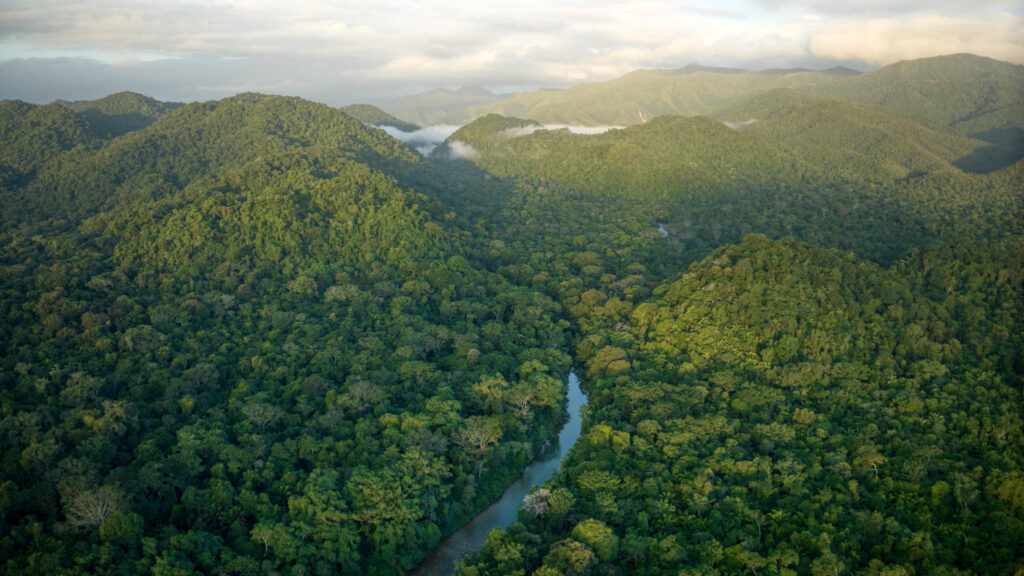
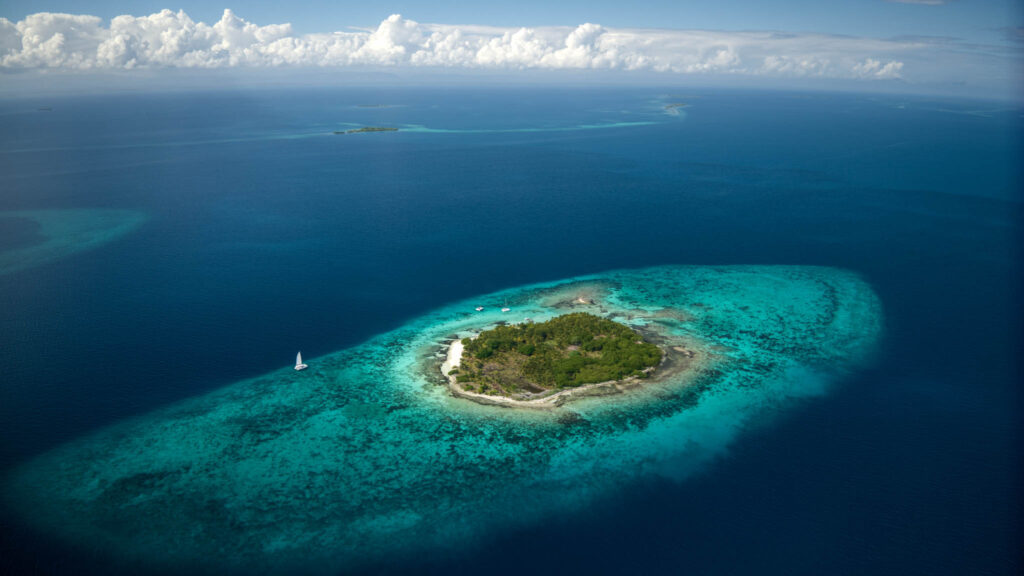
Images, Kevin Quischan: left, Deep River Reserve; right, Moho Caye.
The trip began in a critical block of forest in the country’s north. Located within a 30-million-acre tropical forest block called the Selva Maya, 236,000 acres of tropical forest have recently been protected here – a deal brokered with the support of The Nature Conservancy (TNC), now known as the Belize Maya Forest (BMF). Protecting the BMF alone will avoid more than an estimated 10 million tons of CO2 equivalent. The Nature Conservancy now has an agreement with the government of Belize to develop a carbon project in the BMF that will offer carbon credits on the international carbon market to businesses and other organizations to offset their emissions, allowing the forest to be protected in perpetuity. Journalists met Michael Bowen, Belizean entrepreneur and owner of the Gallon Jug Estate and Chan Chich Lodge; conservation powerhouse, Elma Kay, now Managing Director of the Belize Maya Forest Trust, guided journalists through the forest, to understand the importance of its preservation for the country’s future.
We ventured onto the Rio Bravo Conservation Area, managed by Programme for Belize, which in 2001, pioneered one of the earliest ‘debt-for-nature’ swaps in partnership with the Belizean government and TNC. In the surrounding areas of Blue Creek, journalists got a glimpse of the industrial agriculture that threatens the continued protection of Belize’s forests.
Onwards to Crooked Tree Wildlife Sanctuary, a globally important wetland protected by the Belize Audubon Society. Guided by Amanda Acosta, Executive Director of Belize Audubon Society, journalists learned about Crooked Tree’s history and its global importance for bird migrations, water security and climate resilience.
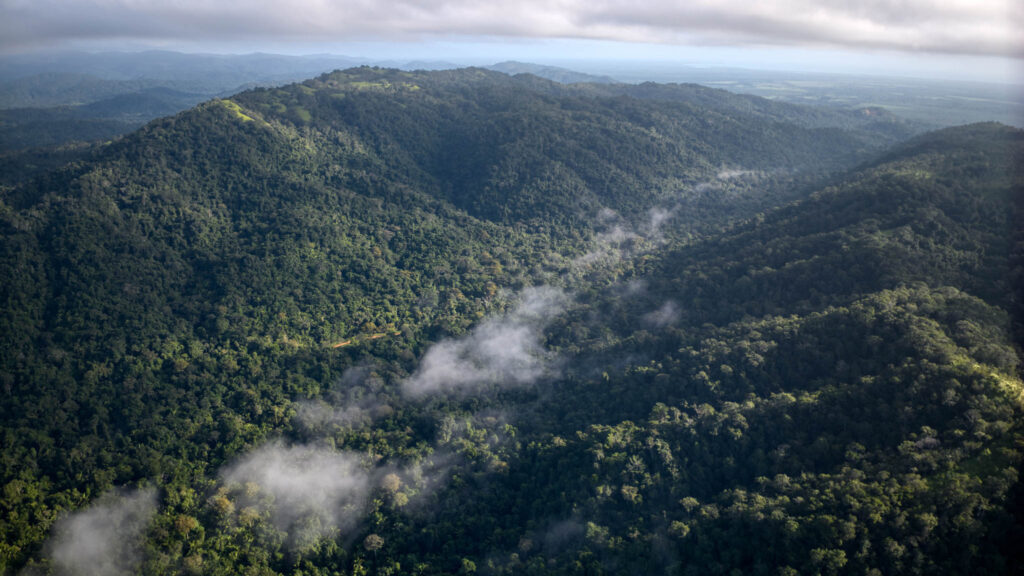
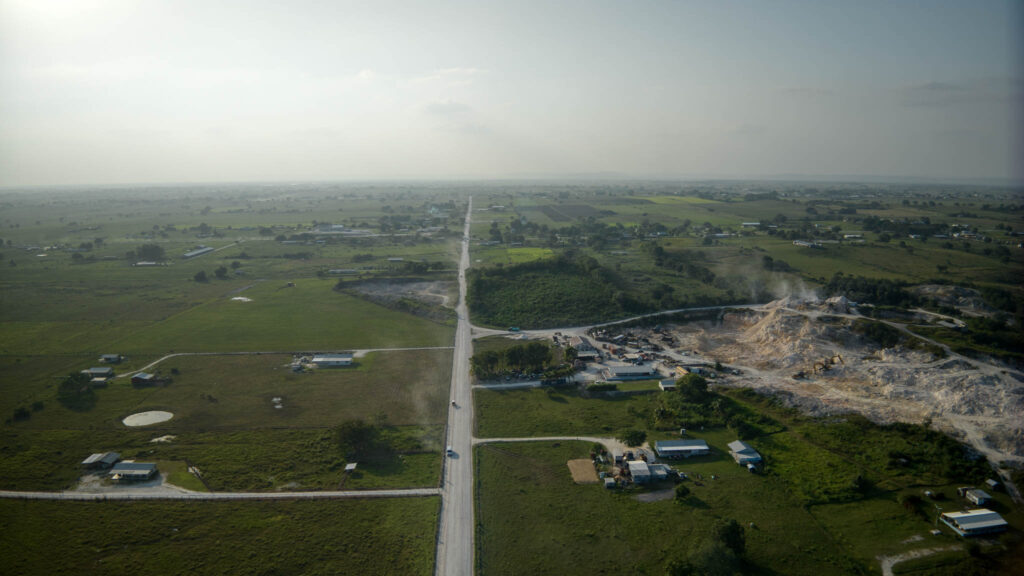
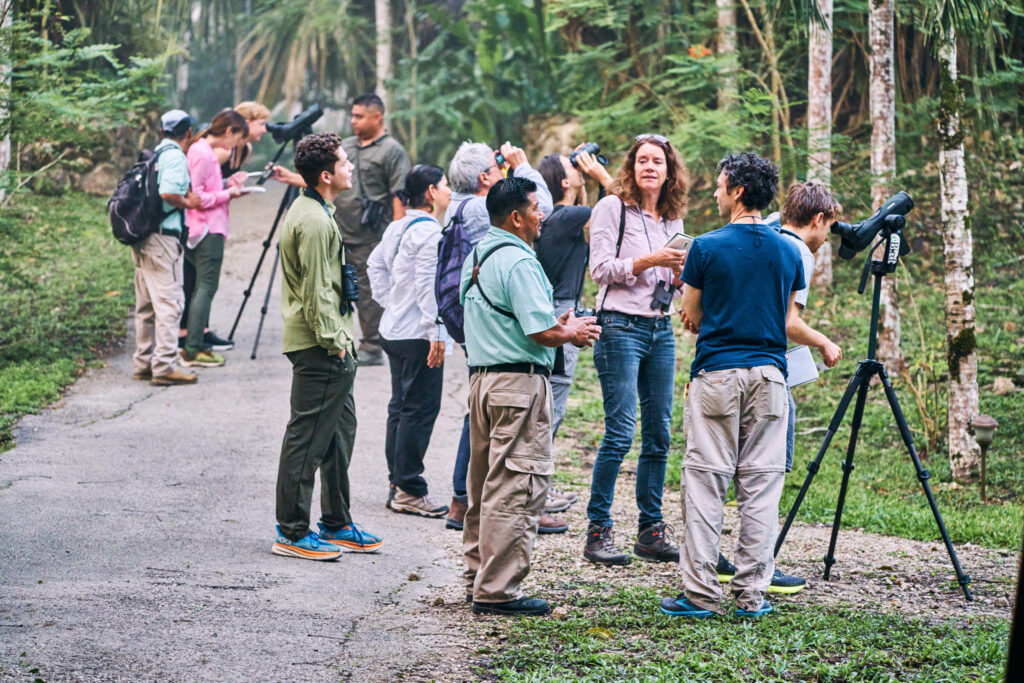
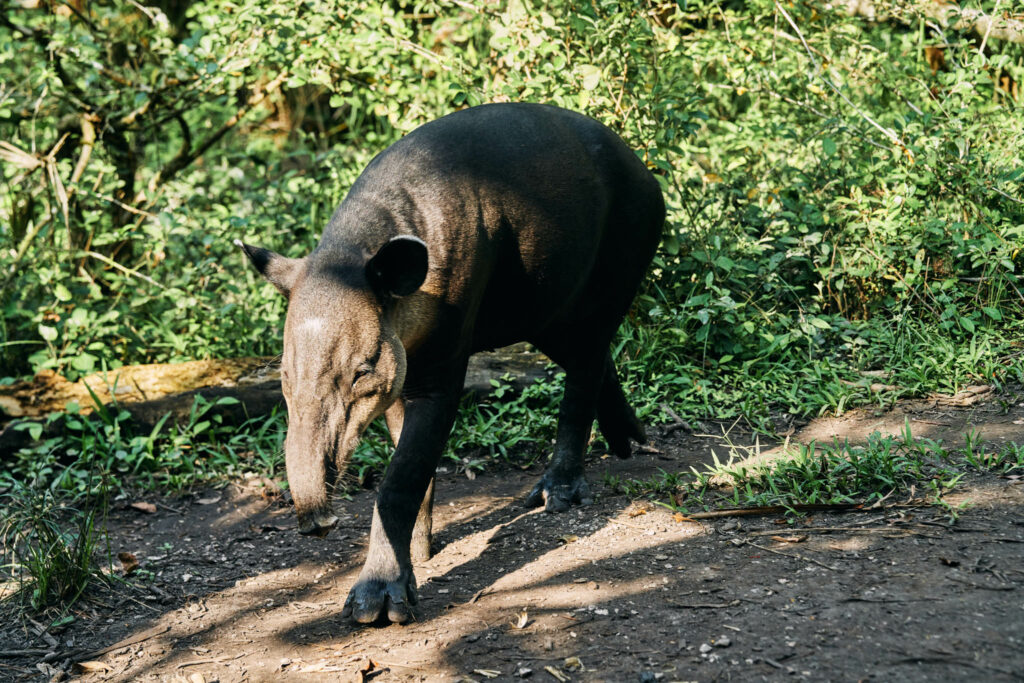
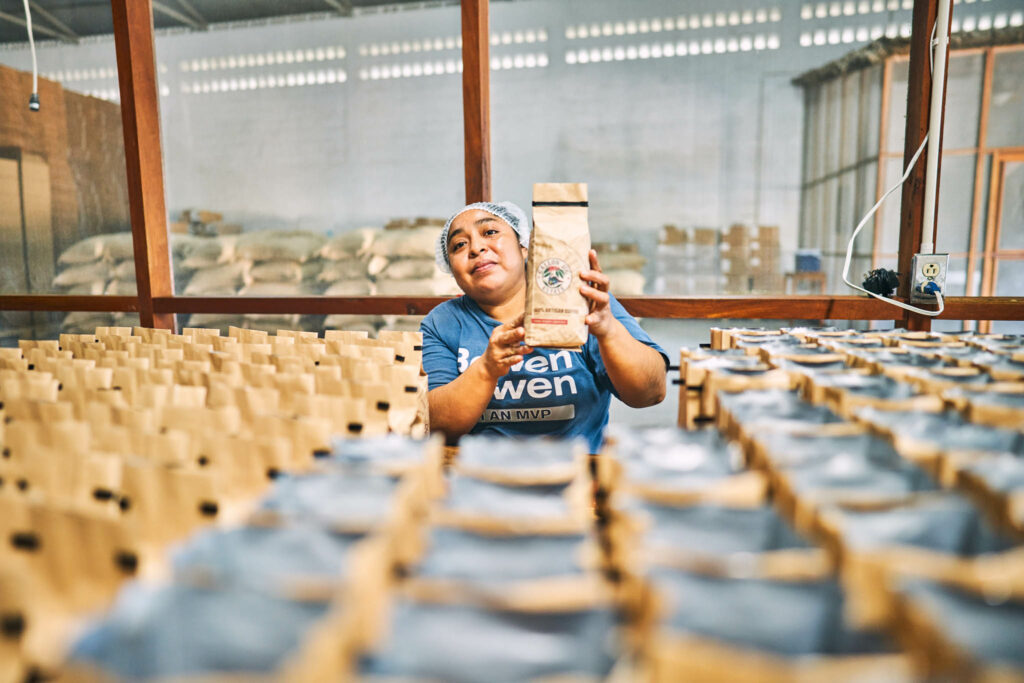
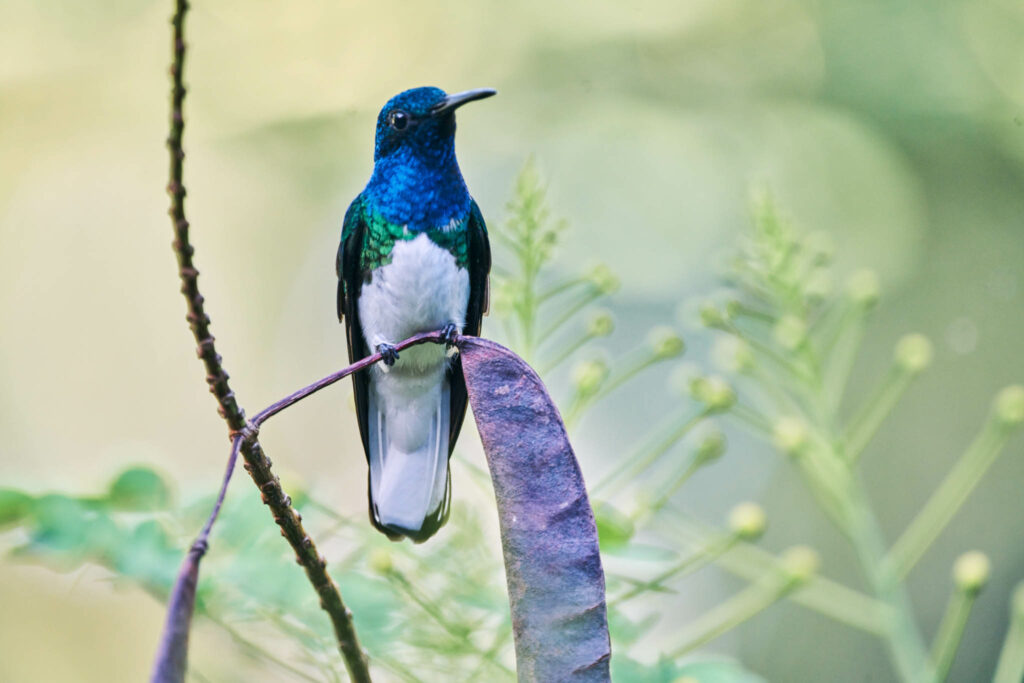
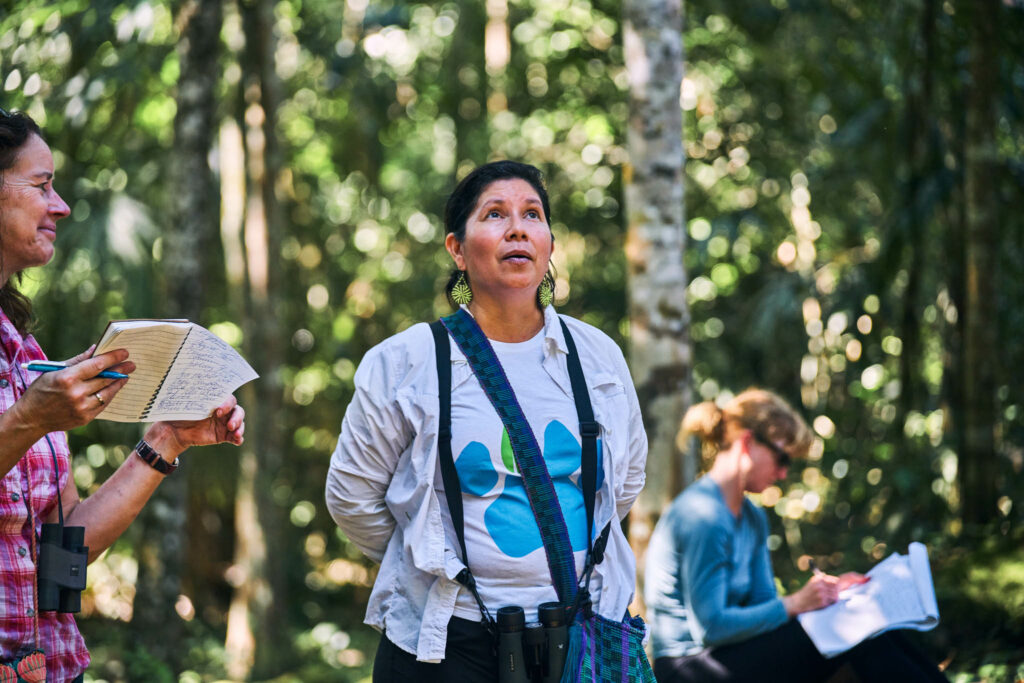
Belize’s coastlines boast some of the most well-preserved mangrove, seagrass and coral reef ecosystems. Led by Executive Director Valdemar Andrade, Turneffe Atoll Sustainability Association conducts day-and-night patrols of the largest atoll in the Mesoamerican Barrier Reef System. In 2012, it was officially designated a Marine Reserve, and since then, TASA have been tightly regulating fishing pressure, empowering traditional fishermen as custodians of Belize’s marine biomes, while building diversified approaches to sustainable livelihoods.
Back on land, the group explored a critical thread of forest known as the Maya Forest Corridor, which connects the southern forests of the Maya Mountain Massif to those in the north, preserving connectivity with the trinational Selva Maya. We understood how organisations such as the Belize Zoo, Re:Wild, Wildlife Conservation Society and others are collaborating under a shared vision to preserve this thread of forest, saving it from agricultural clearances that are rapidly advancing in the region.
Further South at Silk Grass Farms, journalists saw a novel approach to nature preservation, ‘capitalism as if nature mattered’, as entrepreneurs Mandy Cabot and Peter Kjellerup describe it. In 2020, they endowed Silk Grass Wildlife Preserve — a 24,700-acre rainforest adjacent to Silk Grass Farm — with 30% shares of Silk Grass Farms & Enterprises, making the Preserve a key stakeholder in the performance of the farm and business and protecting the Preserve in perpetuity.
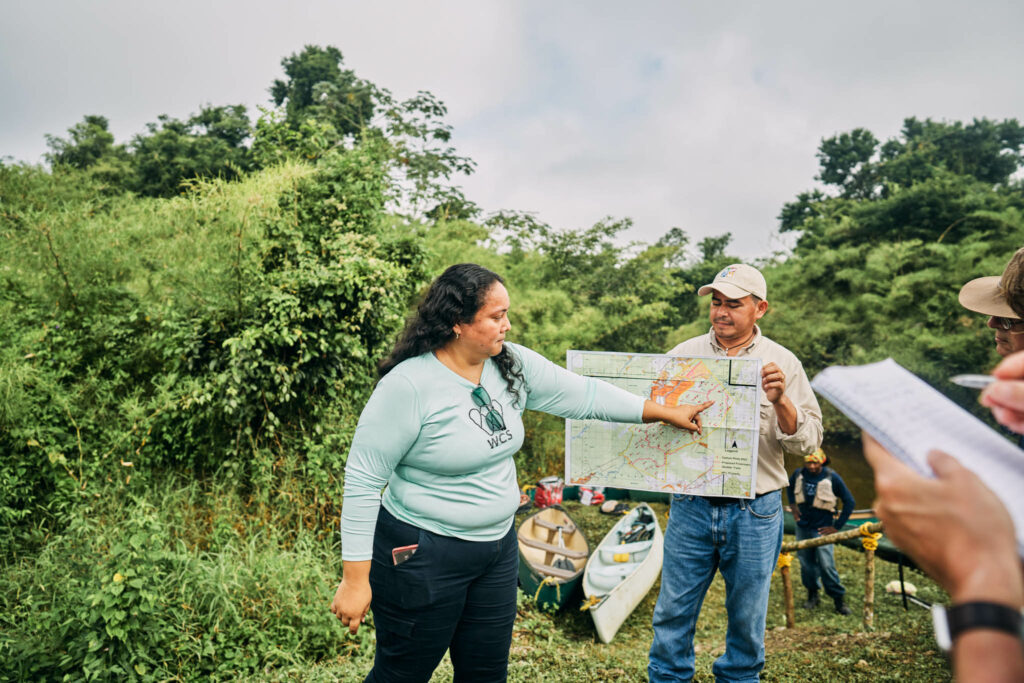
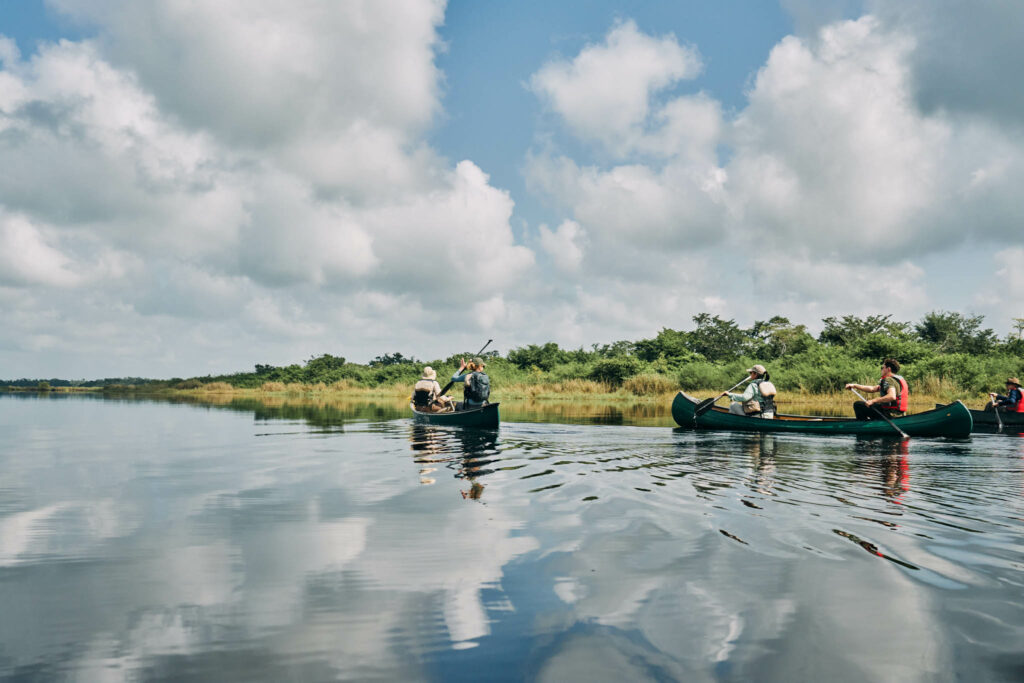
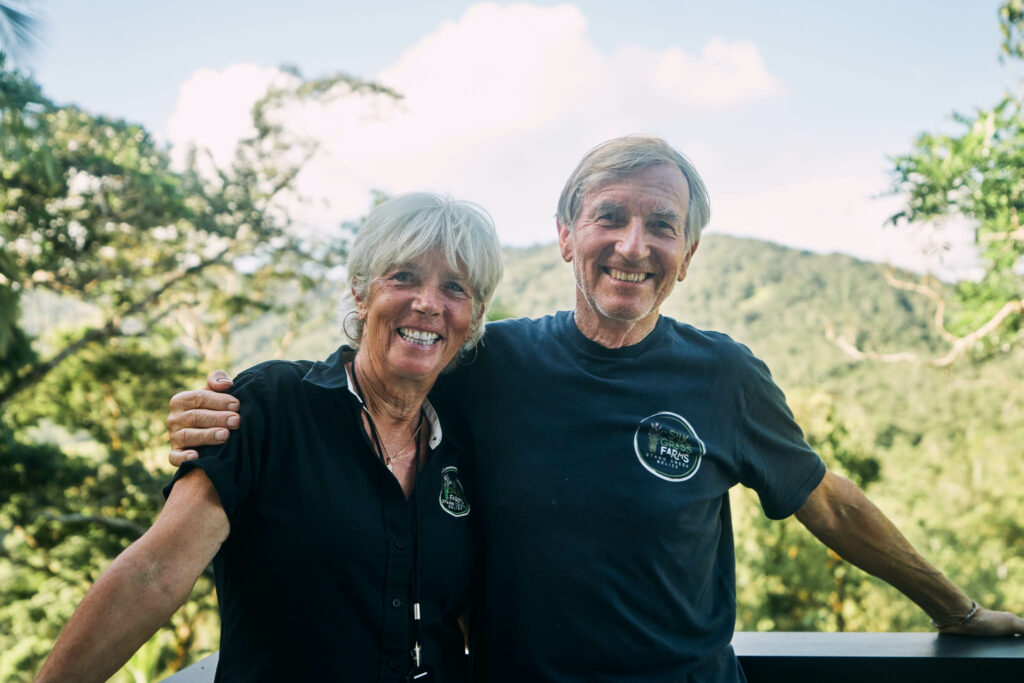
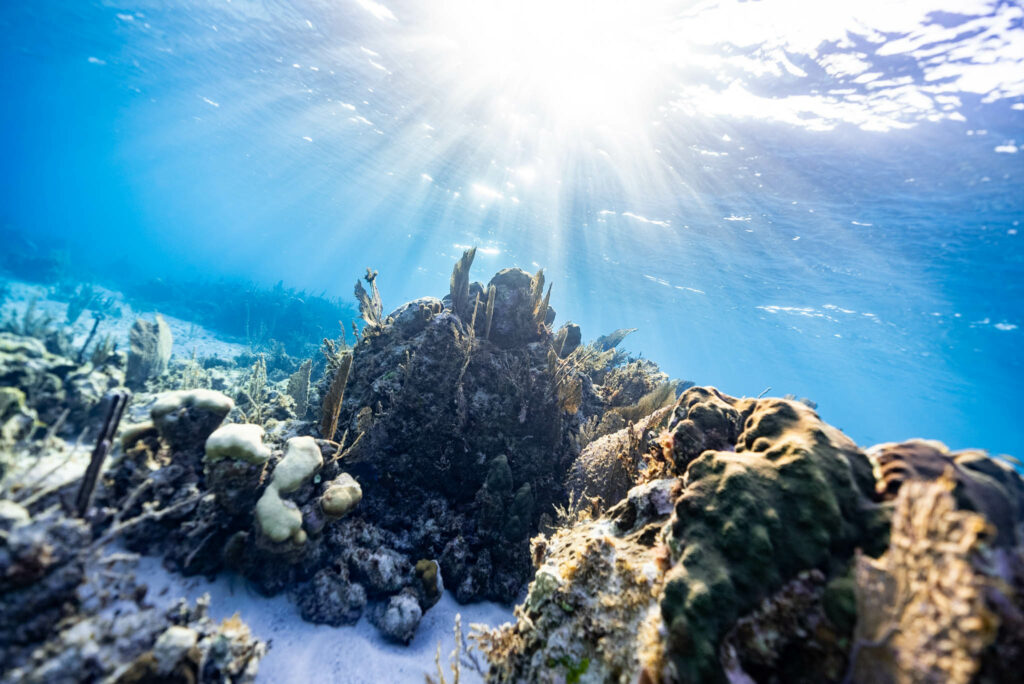
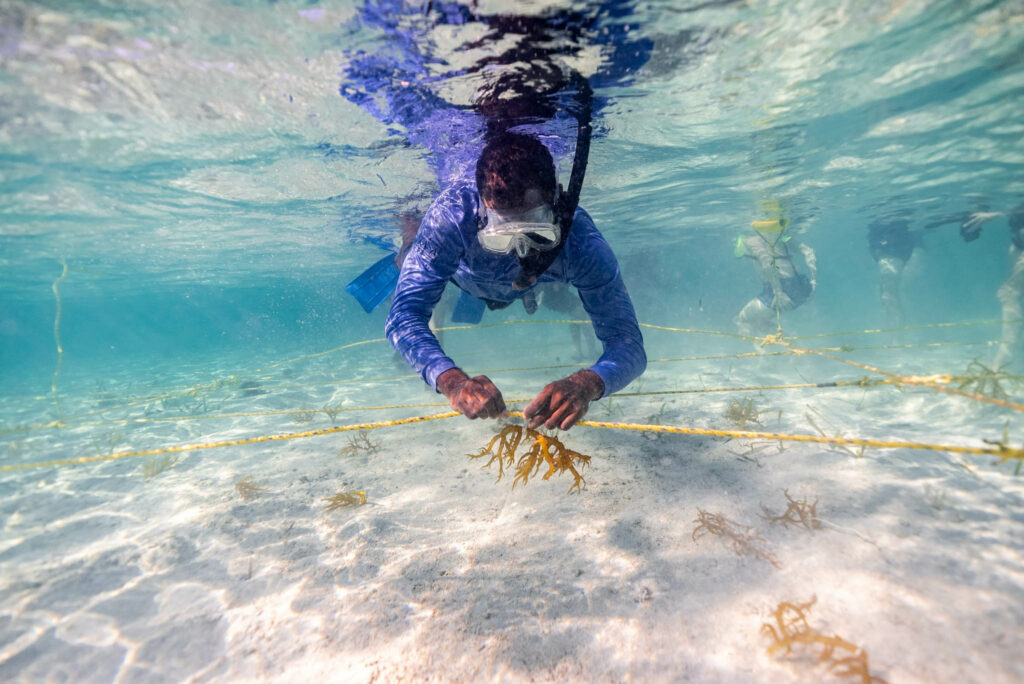
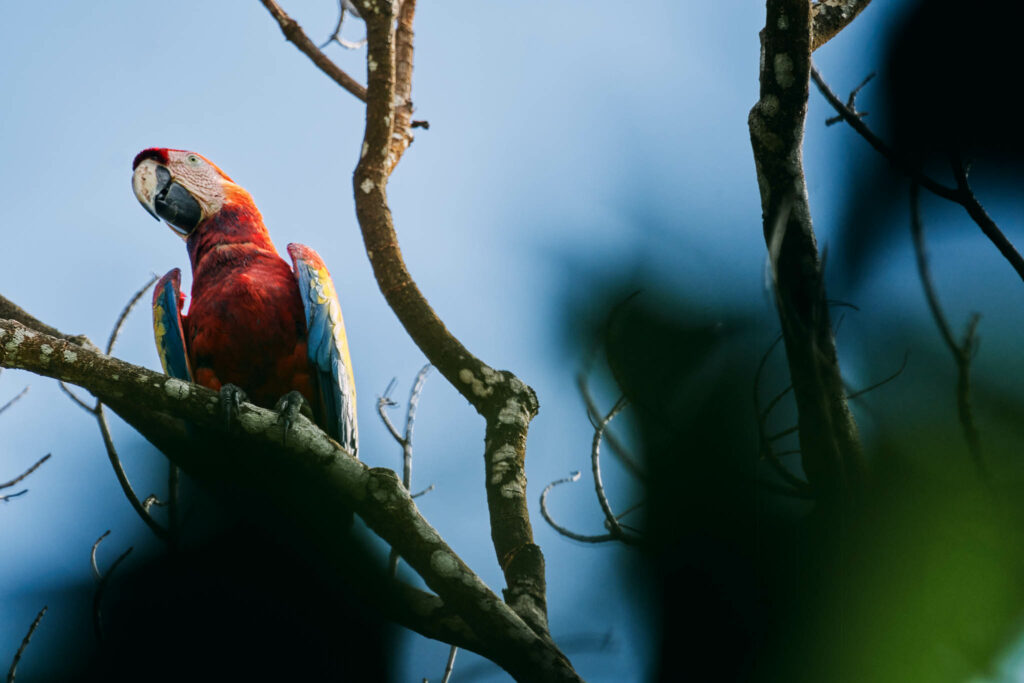
Images: Kevin Quischan.
Down at the coastal village of Placencia, journalists spent time at Moho Caye with Lisa Carne and her team from Fragments of Hope, an organisation restoring coral reef and seabed ecosystems. An excursion with Marisa Tellez, Executive Director and co-founder of the Crocodile Research Coalition, helped journalists understand the challenges facing both the freshwater Morelet’s crocodile and the American saltwater crocodile.
At Red Bank, journalists were joined by Director of Friends for Conservation and Development, Rafael Manzanero, to understand the importance of forest health and connectivity for Belize’s most spectacular bird, the scarlet macaw. Later, the group ventured into the Toledo District to visit Jacob Marlin of the NGO BFREE, an NGO working to conserve the critically endangered Central American ‘hickatee’ river turtle. Here, heirloom cacao agroforestry is providing a sustainable crop, while maintaining forest health.
All conservation in Belize is rooted in indigenous Mayan culture. In the Mayan Golden Landscape in the South, journalists spent time with Whitley-award winning Ya’axche Conservation Trust, learning how communities are being empowered as custodians of forests and savannas. At Payne’s Creek with TIDE, journalists understood how traditional practices of land management are helping to conserve a critical biological corridor that threads broadleaf forests and tropical savannas, out to coastal mangroves and seagrass ecosystems.
By the end of the trip, a vision of hope for global biodiversity had formed. By visiting a network of protected areas, participating in conservation and learning first-hand from communities and NGOs, media guests left inspired to raise international awareness of the pivotal work Belize is carrying out on behalf of the planet.
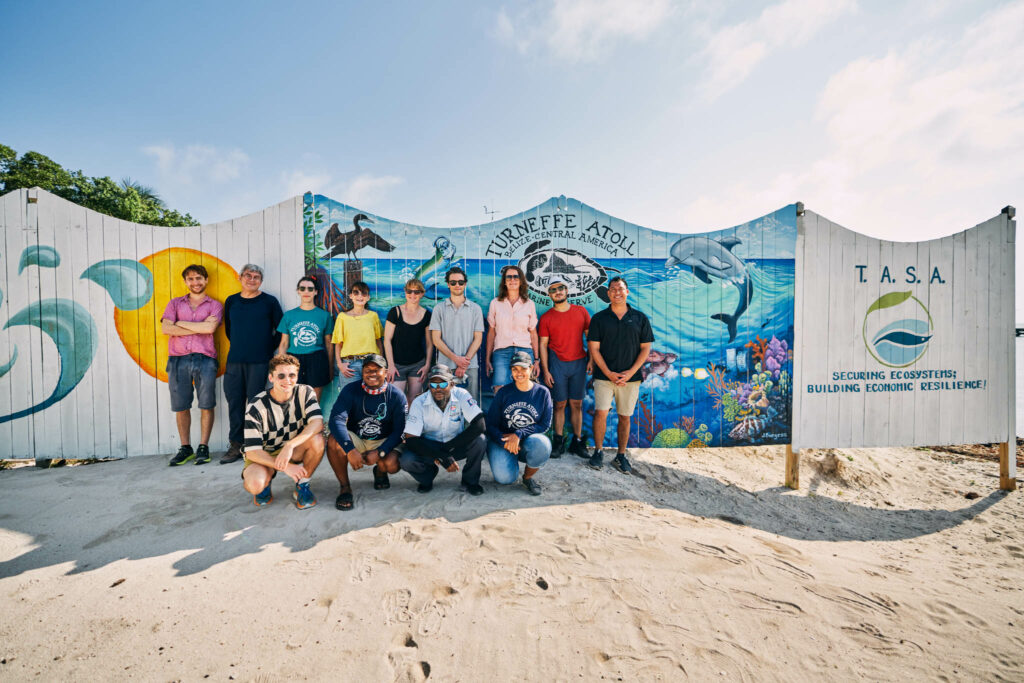
With thanks to all the NGOs, businesses and communities that helped journalists experience and understand Belizean conservation.
The Guardian
Nature
Globe & Mail
SonntagsZeitung
Next year, in partnership with Journeys With Purpose, TENT is offering a conservation journey to discover Belize's secrets of conservation success. This journey is an immersion into the vast ecological wealth of Belize’s three biomes, where environmental leaders have long been marrying biodiversity protection with social impact, to experience the ambitious conservation projects contributing to Belize’s outstanding biodiversity.
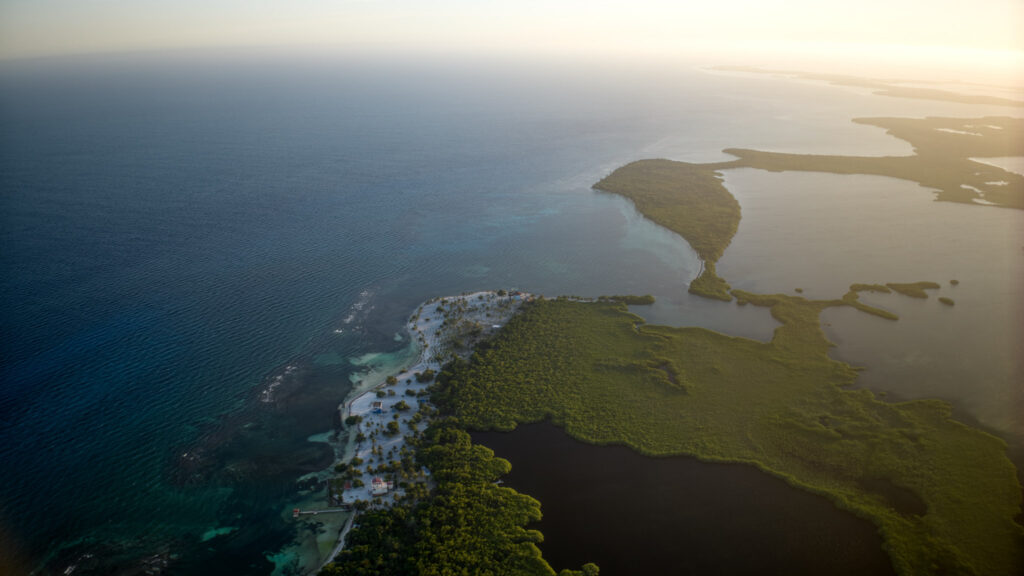
This journey incorporates a 20% donation to four Belizean NGOs, enabling you to visit Belize consciously, with impact.

Spain's bear population is growing, thanks to crucial conservation work.
Through the FIRNS initiative, TENT is working on a new blueprint for investment into nature recovery.
An amazing attendance at the RGS to celebrate Belizean conservation!

